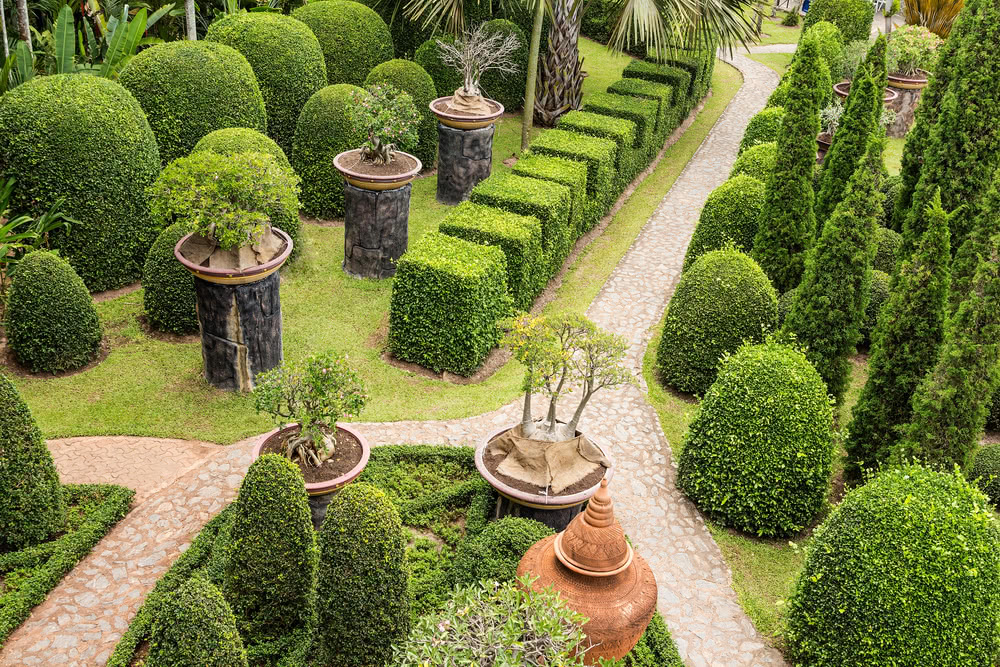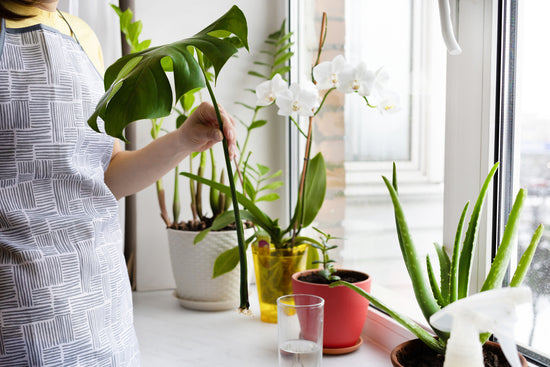Light - The interplay of light and shade creates a mesmerising effect in the garden. If not natural light, various fixtures can be used to attain the desirable effect.
Texture - Textures are visually enticing. These can be developed by using variations in plants and shrubs.
Form - A landscape without a definite form loses its identity and appears monotone. To create a rhythm apply one form or an amalgamation of many forms.
Scale - It is the proportion of one object to another. Intelligent scaling needs to be done to create a desirable effect.
Pattern - Charming patterns can be created by employing both texture and contrast.
Balance - Balance in both symmetrical and asymmetrical form can be created by placing the elements carefully.
Unity - Simplicity is of pivotal importance if one is aiming at bringing unity to the garden design. Each and every element placed in the garden should create harmony.
Contrast - This element can be leveraged the most to avoid predictability.
Colour - This is a powerful tool to evoke emotions and give an identity to the garden that will be cherished by the spectators through the entire lifecycle of the garden.
Rhythm - With Rhythm and repetition monotony can be avoided. Thus, the garden will retain its identity.
Variety - Various plants can be combined to create a never-seen-before effect and can be used as focal points in the garden.
In the article below the fifth element i.e. Pattern has been elaborated.

After finalising the style and features of the garden, the next step is deciding on the pattern of the garden. There are three basic garden pattern themes. These can be individually adapted or mixed and matched to create a personalised garden.
Circular Theme:
 Circular gardens are extremely beneficial if a predictable shape of a garden is to be disguised. These can be used to add a surprise element. The circular beds, patios and beds can be overlapped to create a uber beautiful garden. These patterns should be first captured on paper. One can use a compass to define the shapes by pairing up circles in various forms and styles. The circles need not be exactly same. Different Radii can be used for creating different shapes.
Circular gardens are extremely beneficial if a predictable shape of a garden is to be disguised. These can be used to add a surprise element. The circular beds, patios and beds can be overlapped to create a uber beautiful garden. These patterns should be first captured on paper. One can use a compass to define the shapes by pairing up circles in various forms and styles. The circles need not be exactly same. Different Radii can be used for creating different shapes.Diagonal Theme:

This theme helps the eye to move all across the garden space. Grid lines drawn at 45 degrees can be used as a guideline to design the garden.
Rectangular Theme:

Rectangular themes are the most popular and widely used. They are adapted to give a formal look to the garden. Long or narrow gardens can be easily divided into even sections using this particular theme.
Reference: Practical Gardening by Peter McHoy
Better Homes and Gardens












